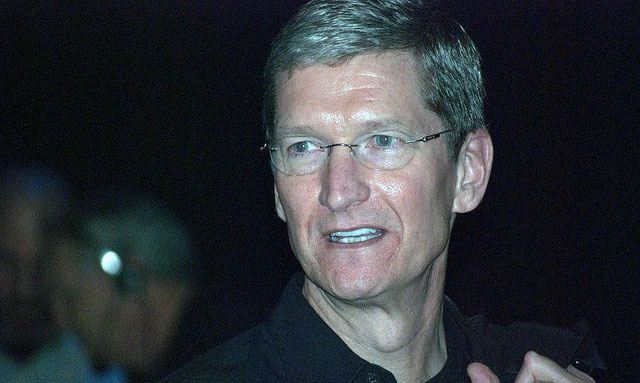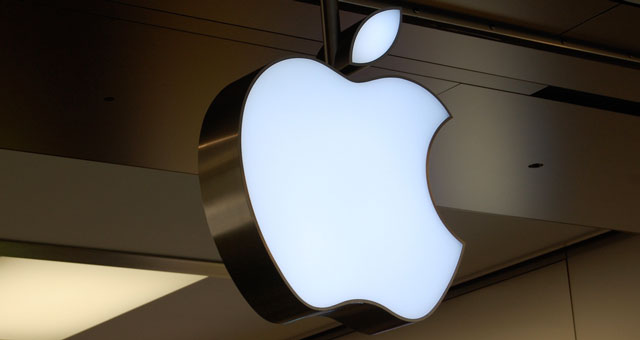
Tim Cook has talked up a lot of technologies since becoming Apple’s chief executive in 2011. Driverless cars. Artificial intelligence. Streaming television. But no technology has fired up Cook quite like augmented reality, which overlays images, video and games on the real world.
Cook has likened AR’s game-changing potential to that of the smartphone. At some point, he said last year, we will all “have AR experiences every day, almost like eating three meals a day. It will become that much a part of you.”
Investors impatient for Apple’s next breakthrough will be happy to know that Cook is very serious about AR. People with knowledge of the company’s plans say Apple has embarked on an ambitious bid to bring the technology to the masses — an effort Cook and his team see as the best way for the company to dominate the next generation of gadgetry and keep people wedded to its ecosystem.
Apple has built a team combining the strengths of its hardware and software veterans with the expertise of talented outsiders, say the people, who requested anonymity to discuss internal strategy. Run by a former Dolby Laboratories executive, the group includes engineers who worked on the Oculus and HoloLens virtual reality headsets sold by Facebook and Microsoft as well as digital-effects wizards from Hollywood. Apple has also acquired several small firms with knowledge of AR hardware, 3D gaming and virtual reality software.
Apple is working on several AR products, including digital spectacles that could connect wirelessly to an iPhone and beam content — movies, maps and more — to the wearer. While the glasses are some way off, AR features could show up in the iPhone sooner.
Apple declined to comment.
It’s an auspicious moment for Apple to move into augmented reality. The global market for AR products will surge 80% to US$165bn by 2024, according to researcher Global Market Insights. But Apple really has no choice, says Gene Munster, a founding partner at Loup Ventures who covered the company for many years as an analyst. Over time, Munster says, AR devices will replace the iPhone. “It’s something they need to do to continue to grow,” he says, “and defend against the shift in how people use hardware.”

Augmented reality is the less known cousin of virtual reality. VR gets more attention because it completely immerses users in an artificial world and has an obvious attraction for gamers. So far, however, headsets like the Oculus and HoloLens are niche rather than mainstream products. Apple believes AR will be an easier sell because it’s less intrusive. Referring to VR headsets, Cook last year said he thought few people will want to be “enclosed in something”.
Building a successful AR product will be no easy task, even for a company known for slim, sturdy devices. The current crop of AR glasses are either under-powered and flimsy or powerful and overwhelmingly large. Apple, the king of thin and light, will have to leapfrog current products by launching something small and powerful.
Adding AR features to the iPhone isn’t a giant leap. Building glasses will be harder. Like the Watch, they’ll probably be tethered to the iPhone. While the smartphone will do the heavy lifting, beaming 3D content to the glasses will consume a lot of power, so prolonging battery life will be crucial.
Content is key, too. If Apple’s AR glasses lack useful apps, immersive games and interesting media content, why would someone wear them? The glasses will also require a new operating system and perhaps even a new chip. Finally, Apple will have to source the guts of the gadget cheaply enough to make it affordable for the mass market.
When it was developing the Watch, Apple put together a multidisciplinary team drawn from inside and outside the company. It has done much the same with the AR effort. In 2015, Apple recruited Mike Rockwell, who previously ran the hardware and new technologies groups at Dolby, the iconic company known for its audio and video technology. Rockwell also advised Meta, a small firm that makes $950 AR glasses and counts Dolby as an investor.
Rockwell now runs the main AR team at Apple, reporting to Dan Riccio, who’s in charge of the iPhone and iPad hardware engineering groups, the people said. “He’s a really sharp guy,” says Jack McCauley, who co-founded and worked at Oculus before it was sold to Facebook in 2015. “He could certainly put a team together that could get an Apple AR project going.”

Last spring, in a sign that it’s serious about taking products to market, Apple put some of its best hardware and software people on Rockwell’s team, including Fletcher Rothkopf who helped lead the team that designed the Apple Watch, and Tomlinson Holman, who created THX, the audio standard made popular by LucasFilm.
Apple has also recruited people with expertise in everything from 3D video production to wearable hardware. Among them, the people say, are Cody White, former lead engineer of Amazon’s Lumberyard virtual reality platform; Duncan McRoberts, Meta’s former director of software development; Yury Petrov, a former Oculus researcher; and Avi Bar-Zeev, who worked on the HoloLens and Google Earth.
Apple has rounded out the team with iPhone, camera and optical lens engineers. There are people with experience in sourcing the raw materials for the glasses. The company has also mined the movie industry’s 3D animation ranks, the people said, opening a Wellington office and luring several employees from Weta Digital, the New Zealand special-effects shop that worked on King Kong, Avatar and other films.
Besides hiring people, Apple has been busy making tactical acquisitions. In 2015, the company acquired Metaio, which developed AR software. Former Metaio CEO Thomas Alt now works on Apple’s strategic deals team, which decides which technologies to invest in. Last year, Apple also bought FlyBy Media, which makes AR-related camera software. Cook even visited the offices of Magic Leap last summer and displayed interest in the secretive company’s AR technology, the people say. Magic Leap declined to comment.
Hundreds of engineers are now devoted to the cause, including some on the iPhone camera team who are working on AR-related features for the iPhone, according to one of the people. One of the features Apple is exploring is the ability to take a picture and then change the depth of the photograph or the depth of specific objects in the picture later; another would isolate an object in the image, such as a person’s head, and allow it to be tilted 180 degrees.
A different feature in development would use augmented reality to place virtual effects and objects on a person, much the way Snapchat works. The iPhone camera features would probably rely on a technology known as depth sensing and use algorithms created by PrimeSense, an Israeli company acquired in 2013. Apple may choose to not roll out these features, but such additions are an up-and-coming trend in the phone business.
The AR-enhanced glasses are further down the road, the people say. Getting the product right will be key, of course. Wearables are hard. Apple’s first stab at the category, the Watch, has failed to become a mainstream hit. And no one has forgotten Google Glass, the much-derided headset that bombed in 2014.
Still, time and again, Apple has waited for others to go first and then gone on to dominate the market. “To be successful in AR, there is the hardware piece, but you have to do other stuff, too: from maps to social to payments,” Munster says. “Apple is one of the only companies that will be able to pull it off.” — (c) 2017 NewsCentral Media
- Reported with assistance from Alex Webb and Mark Bergen




